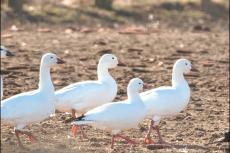The East Hampton Town Trustees approved a water quality assessment program proposed by Christopher Gobler of Stony Brook University’s School of Marine and Atmospheric Sciences when they met via videoconference on Monday.
The trustees have engaged Dr. Gobler to monitor water bodies under their jurisdiction since 2013. The Friends of Georgica Pond Foundation, a group of pondfront property owners, has also contracted Dr. Gobler’s lab to monitor that body, which has been beset by blooms of toxic cyanobacteria, or blue-green algae, in each of the last several summers, and to develop mitigation plans, which have proven successful.
The 2020 sampling season begins this month and is to continue through October. Sampling will be done twice per month at Napeague Harbor, Accabonac Harbor, Hog Creek, Three Mile Harbor, Fresh Pond, Northwest Creek, Wainscott Pond, and Hook Pond. Sampling in Georgica Pond will be more frequent.
Because there are several other water sampling programs on the South Fork, including the New York State Department of Environmental Conservation, the Surfrider Foundation, and Concerned Citizens of Montauk, in recent months the trustees have discussed altering their testing regimen to avoid duplication of effort.
A trustee committee of John Aldred, Susan McGraw Keber, and Jim Grimes met with groups conducting their own tests and brought their conclusions to Dr. Gobler. On Monday, Mr. Aldred summarized the proposed changes.
Dr. Gobler should eliminate fecal coliform monitoring, instead using the D.E.C.’s results to continue analyzing that aspect of water quality in the harbors, Mr. Aldred said. Dr. Gobler should also eliminate testing for Dinophysis, as levels of toxicity for the dinoflagellate have been relatively low in all harbors.
With the exception of Three Mile Harbor, testing for Alexandrium, which produces a dangerous neurotoxin but has not been seen as problematic, should be eliminated, Mr. Aldred said. Three Mile Harbor has seen the highest levels of it and should continue to be monitored, particularly given the degraded water quality at its southern end. “Given the sensitivity of Three Mile Harbor and the stress that’s been put on it,” he said, “we felt it was wise to maintain that testing in that harbor.”
“In place of some of this work we’re eliminating, we’re able to do a little bit more microbial source tracking,” a means of determining human and nonhuman sources of fecal contamination, Mr. Aldred said.
Tracking sources of microbial problems will continue at three sites in Three Mile Harbor, which began two years ago, and three more at Accabonac Harbor, which was added last year. This year, microbial source tracking will be done in Northwest Creek and in Hog Creek.
Dr. Gobler’s sampling program includes a continuous temperature and dissolved oxygen monitor in Three Mile Harbor. Another is to be added at Napeague Harbor. “We felt that was important,” Mr. Aldred said, “because of work that we’re looking into, moving toward possibly reopening the east inlet.” Continuous monitoring of temperature and oxygen “will give us more information than just biweekly samples.”
Finally, Mr. Aldred said of Dr. Gobler, “in a substitute for the fecal coliform monitoring he won’t be doing himself, we’ll maintain all the stations and instead test for total nitrogen there. There hasn’t been any comprehensive look at the nitrogen load in our waters.” With the nascent effort to replace aging or failing septic systems in critical watersheds, it is important to determine if they are having the desired impact, he said. Concentrations will be compared to the Peconic Estuary Program’s goal of .4 milligrams per liter for ecosystem health.
The nine trustees voted unanimously to approve the $60,133 budget for Dr. Gobler’s 2020 program.
Also at the meeting, the trustees briefly discussed an application from four adjacent property owners on Lazy Point Road in Amagansett for a coastal erosion remediation plan. Mr. Grimes said that the proposed project would install aeration pipes vertically into the beach, “but I think a lot more information is going to need to come forward before we’re ready to make any decision on this.”
The applicants or their agent will have to deliver a presentation before the board, Mr. Grimes said, but the ongoing Covid-19 pandemic precludes this. The discussion was tabled.



